An agile transformation roadmap outlines the key steps an organization takes when shifting toward Agile ways of working. Because every company has its own culture, challenges, and goals, there isn't a one-size-fits-all playbook.
Still, by breaking the journey into essential phases, you can create a customized roadmap that fits your organization's needs while avoiding common pitfalls.
What Is an Agile Transformation Roadmap?
An agile transformation roadmap is a step-by-step guide to adopting agility at scale. Think of it less like a fixed plan and more like a compass - it helps you move in the right direction while allowing for adjustments.
The roadmap usually answers questions like:
What Are the Phases in an Agile Transformation Roadmap?
Through our experience and research, most agile transformations can be broken into six main steps. While the details may vary, the sequence is surprisingly consistent.
| Phase |
Focus |
| 1. Define the problem and adopt the mindset |
Identify the "why" behind the change and embrace Agile values, not just frameworks. |
| 2. Start with what you do now |
Visualize current processes and evolve gradually rather than attempting a big-bang rollout. |
| 3. Get leadership buy-in |
Ensure leaders understand Agile and commit to guiding the transition. |
| 4. Set North Star goals |
Create shared objectives, such as faster delivery or improved collaboration. |
| 5. Start with a pilot team |
Test Agile in a smaller environment to uncover challenges and build momentum. |
| 6. Scale Agile across the organization |
Expand adoption both top-down and bottom-up until Agile becomes a cultural norm. |
How Do You Make an Agile Roadmap Transformation?
1. Define the Problem and Adopt the Agile Mindset
Every transformation starts with why. Perhaps you need to speed up delivery, reduce bottlenecks, or respond faster to customers. Whatever the reason, avoid adopting Agile just because others are doing it.
Agility isn't just about installing an Agile framework like Scrum or SAFe. It's about shifting culture - toward knowledge sharing, autonomy, and continuous improvement.
2. Start with What You Do Now: Evolution, Not Revolution
Agile transformation is an evolutionary journey, not a switch you flip overnight. Begin by mapping how value currently flows through your system (value stream mapping). This creates a shared understanding of how work gets done and where bottlenecks appear.
By visualizing the end-to-end process, you bring transparency, reduce resistance, and create a foundation for targeted improvements.
“You can’t optimize a system you don’t fully understand.”
Nigel Turlow, co-creator of The Flow System, creator of Scrum The Toyota Way
 Visualizing an end-to-end value delivery process using kanban system
Visualizing an end-to-end value delivery process using kanban system
3. Get Leadership Buy-in
Leaders must not only approve the change but actively participate in it. Their role is to communicate the business value of Agile, sponsor initiatives, and measure impact (e.g., how can Agile help the business solve problems and lead to reduced time-to-market or lower costs).
The 16th State of Agile Report shows that lack of leadership support remains a top obstacle in transformations. Agile leaders should model behaviors, share knowledge, and reinforce the "why" across the organization.
4. Set the North Stars of Transformation
Clear goals are the difference between tinkering and real transformation. Transformation leaders should make these goals visible, shared, and trackable.
One proven approach is Objectives and Key Results (OKRs). They connect strategic vision to measurable outcomes and help teams align execution with company objectives.
 Cascading company vision into objectives and key results
Cascading company vision into objectives and key results
5. Start with a Pilot Team
Large-scale change can overwhelm. That's why many organizations begin with a pilot team or project. Supported by Agile coaches, the pilot tests practices, uncovers challenges, and builds a case for expansion.
A successful pilot provides tangible results to secure broader buy-in and guides the scaling process.
6. Scale Agile Across the Organization
True agility isn't confined to a team - it's a company-wide mindset. Scaling requires top-down support and bottom-up engagement.
Events, workshops, and ongoing conversations help keep Agile values alive. Over time, agility shifts from a project to a cultural norm - a way of working and thinking.
 Agile transformation roadmap steps
Agile transformation roadmap steps
What Is an Agile Transformation Timeline?
So, how long does it take?
Agile transformation is not a project with a finish line - it's a continuous journey. Depending on size, culture, and leadership commitment, transformations may take months to years.
Teams might begin seeing improvements within a few months, but embedding agility into culture takes far longer. Think evolution, not deadline.
How Do You Measure the Success of Agile Transformation?
Success isn't about adopting agile ceremonies or buying tools. It's about whether agility improves business outcomes.
You can start by asking:
- How has our time-to-market improved?
- Are teams delivering value more predictably?
- Have collaboration and engagement increased?
Metrics to track include:
- Lead time (time from request to delivery).
- Cycle time trends (consistency of delivery).
- Flow efficiency (value-adding vs. waiting time).
Visualizing these flow metrics on a Kanban board or cumulative flow diagram provides insights into bottlenecks and performance over time. Continuous analysis and adaptation are key to sustaining improvements.
 Visualizing delivery lead time on a kanban board
Visualizing delivery lead time on a kanban board
Accumulation and analysis of data are the foundation of a predictable Agile process. Inspecting the fluctuations of the cycle times can unlock insights into your team’s performance over time. Knowing how long it takes you to complete a given amount of work can affect your project delivery forecasts, so you never have to estimate blindly again.
 Visualization of the average cycle time of a marketing process using Cycle Time Scatter Plot in Businessmap
Visualization of the average cycle time of a marketing process using Cycle Time Scatter Plot in Businessmap
Are There Agile Transformation Roadmap Templates?
Yes - though they should be treated as guides, not prescriptions. Templates can help structure your journey, but need tailoring to your context.
Common elements in templates include:
- Initial assessment of current state.
- A phased plan (pilot, scale, optimize).
- Metrics and checkpoints for measuring progress.
- Communication strategies for leadership and teams.
Agile platforms like Businessmap provide visual roadmap templates that connect strategy, portfolio initiatives, and team execution.
For instance, AI-powered whiteboards in Businessmap can automatically generate a strategy map template, helping teams align projects with measurable outcomes in minutes. Here's a short video showing how it works in practice.
Businessmap is the most flexible software
to align work with company goals
In Summary
Every Agile transformation is unique, but most successful journeys share six core steps:
- Define the problem and adopt the Agile mindset.
- Start with what you do now—evolve, don't revolutionize.
- Get leadership buy-in.
- Set North Star goals.
- Test with a pilot team.
- Scale agility across the organization.
Along the way, remember that transformation is less about frameworks and more about culture, leadership, and continuous improvement.





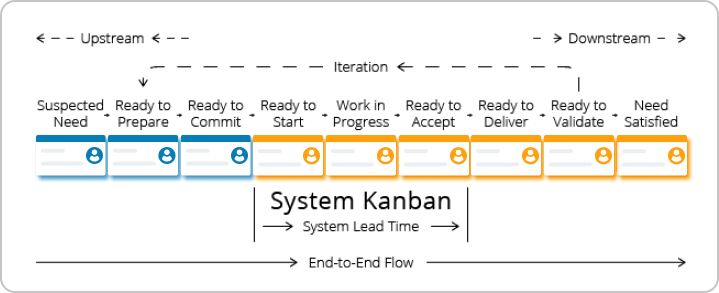 Visualizing an end-to-end value delivery process using kanban system
Visualizing an end-to-end value delivery process using kanban system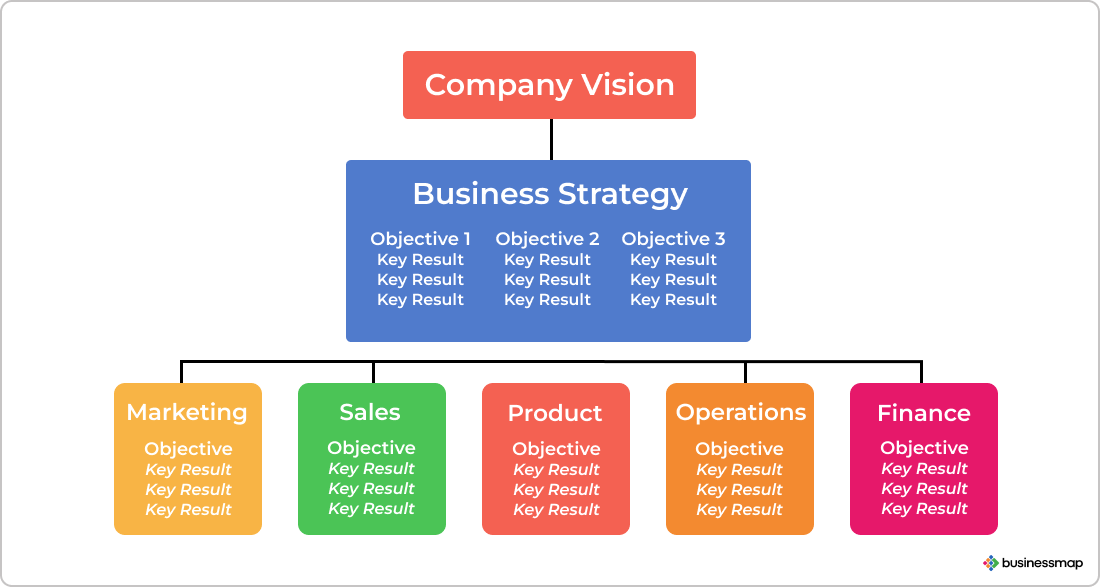 Cascading company vision into objectives and key results
Cascading company vision into objectives and key results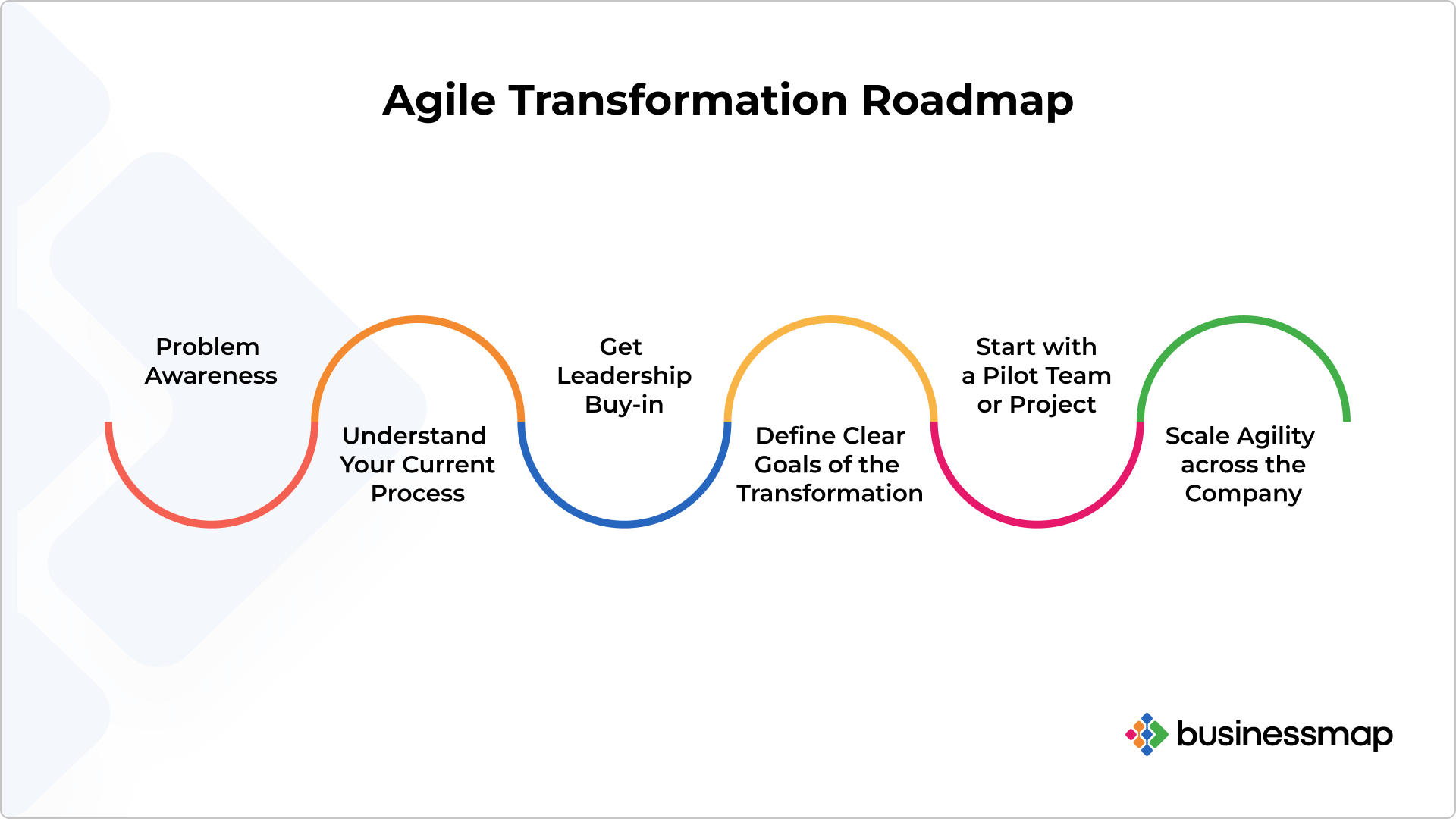 Agile transformation roadmap steps
Agile transformation roadmap steps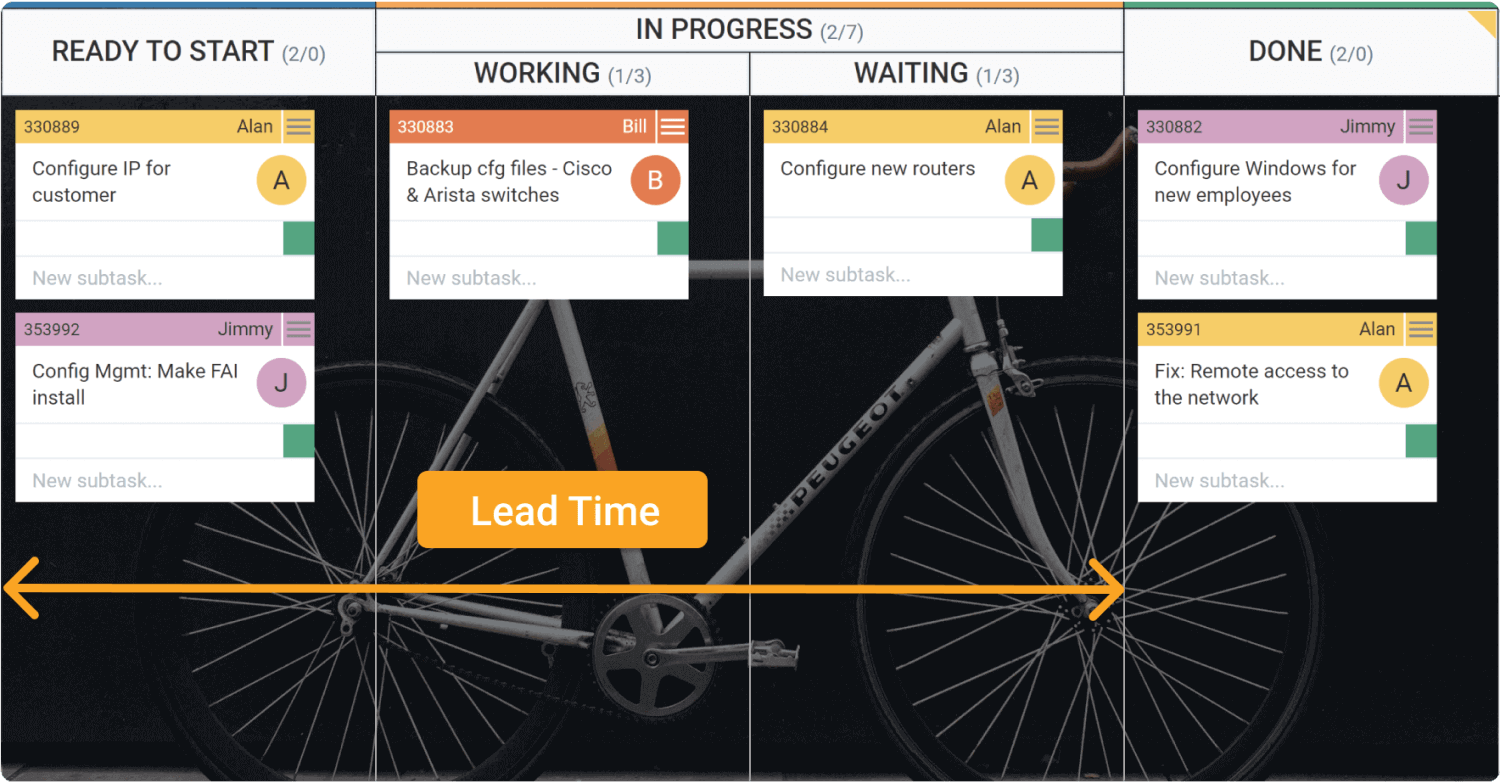 Visualizing delivery lead time on a kanban board
Visualizing delivery lead time on a kanban board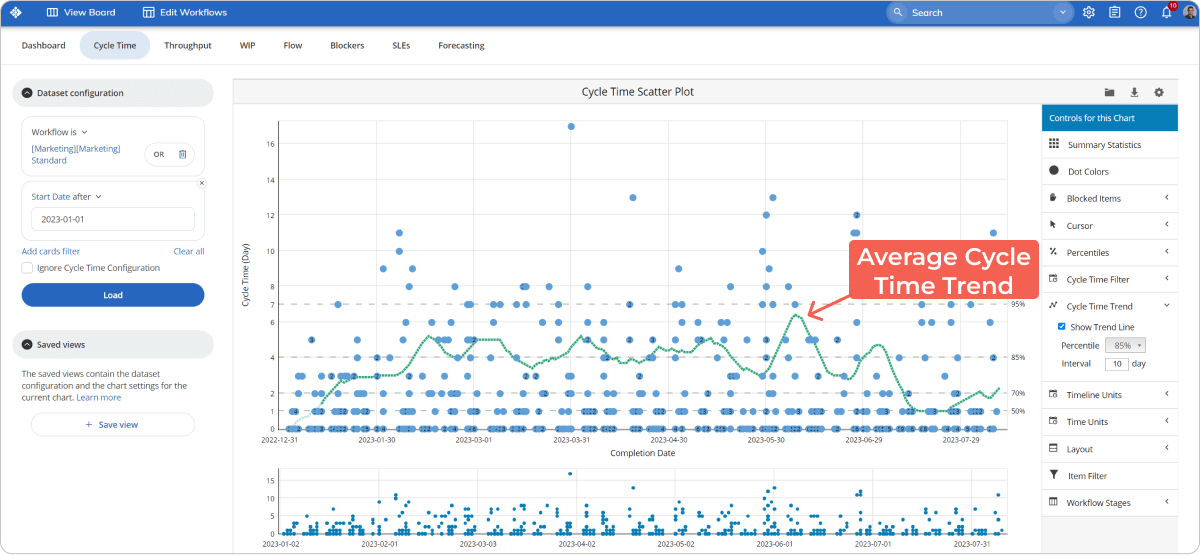 Visualization of the average cycle time of a marketing process using Cycle Time Scatter Plot in Businessmap
Visualization of the average cycle time of a marketing process using Cycle Time Scatter Plot in Businessmap

